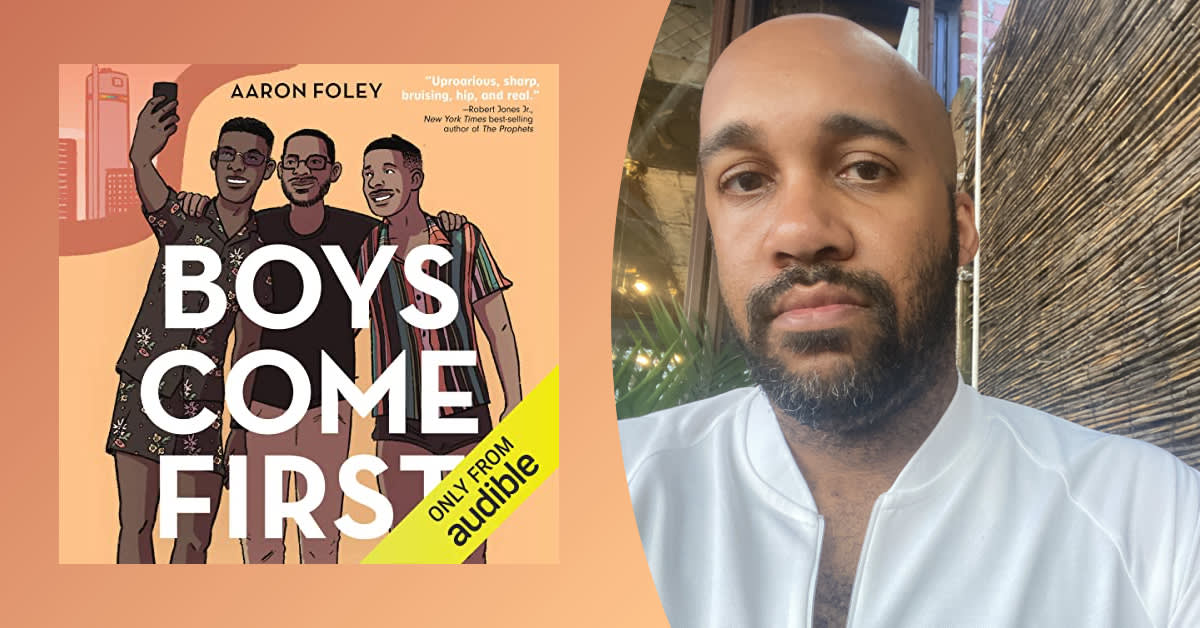Note: This post has been translated from Spanish.
We have always been told that life has two paths, a good and a bad one. As children we were taught the world was polarized: White and Black, Normal and Abnormal, Able and Disabled. However, there are many more tones: shades of gray. By integrating opposites, we are able to see the complete scale of our own colors. This is what a woman like Tony has achieved in her life. She knows that life is truly lived through experience, pain, joy, sharing, and community. Tony is not simply an example of life, she is whole, and believe me, she is wonderful.
Let me tell you a little about her. María Antonieta Osornio, better known as Tony, ran away from her home at 18 to seek what we call "freedom," something lacking in her traditional, turn-of-the-century Mexican family. The only future role expected of her, that of "the grandmother of Mexico," that endearing old lady, a leader, wise, sure of herself, a constant caregiver of all the family’s children with ample arms to offer, a matriarch on the edge of the ranch. However, Tony did not want to remain within the walls her family attempted to impose upon her, to give up on knowing the world out there. She rebelled and left the stockade of antiquity because it wasn't hers, not built by her own will and hands. So, with her own will she walked towards another possible world—and where was that? Her private moments and desires, her internal world, the world where we do not often venture because of ego or fear. Tony found her intimate freedom through her broken body, through her physical disability. And so she learned that we are more than the body we own.
Tony found her intimate freedom through her broken body, through her physical disability. And so she learned that we are more than the body we own.
The road was very difficult. She was and still is one of the most beautiful and athletic women that I have ever known, a Mexican Charlie’s Angel. In the blink of an eye, she became a stagnant piece of meat comprised of bones, with seven skull perforations drilled in her head to sustain the weight of her upper body. Since she was not able to communicate her pain level to the doctor, all of this done without anesthesia, because the doctor did not know what dosage would kill her. She was hospitalized for three years. Known as The Skydiver, she found in her profession and passion the freedom she sought. She achieved in her profession a perfection and precision never before witnessed by the Mexican Army, especially by a woman. But it was also an addiction and it broke her body. Imagine: One day you go to bed with the mind and body of an exceptional athlete. You feel that you have the perfect family, a supportive and loving husband, wonderful children, and you doing the work you love and are well compensated for it. You are flying through the air, painting the Mexican flag with movements so perfect they are the envy of the sky itself. Then suddenly everything is gone. You wake up realizing your body is not responding and the only organ you feel is your hypersensitive skin, where a casual breeze feels like you are being clawed open by a fierce beast. Your body cannot regulate your temperature, and when you get too hot, you feel as if you are being burned alive. The only liquid emitted from your body is through the rot of bedsores where your skin is infected and dying. The endless days go on without a single movement on the mattress free of pain.
There are so many more amazing details about this story that you will get from listening to The Woman Who Knows How to Fly. But here I want to simply say that, like a phoenix, Tony rose from her ashes and used them as nutrition to flourish like a flower never before known or seen. She has redefined disability because she did not choose the right or left path, but the path that illuminated the darkness of her inner consciousness. A path without an end, continually being built, integrating physical, mental, and moral elements. A complex path combining ideologies and moralities that polarize us and make it hard to find common ground. Tony has paved a way that is not polarized or governed by a particular religion or ideology, but opens itself to the awareness that learning is living. We are beings constantly remaking ourselves, creating our own opportunities to live and learn in this evolution through life and the cosmos. Tony has given the world the opportunity to decide, disabled or not, how we run, walk, or crawl through the life we make. She gives us the acute awareness of the importance of our decisions. And the opportunity to make those decisions is our greatest freedom.
She has redefined disability because she did not choose the right or left path, but the path that illuminated the darkness of her inner consciousness.
Tony taught me something similar to what Charles Caleb Colton said: "To dare to live alone is the rarest courage; since there are many who had rather meet their bitterest enemy in the field, than their own hearts in their closet." Tony has given people with disabilities the power to look inward and outward and know it is possible to walk the world with the body you have, and in that awareness is the subtle magic called freedom.
--
María Antonieta Osornio, 'La Mujer Que Sabe Volar'
Siempre nos han dicho que la vida tiene dos caminos, uno bueno y uno malo, desde niños entendemos a que el mundo solo tiene dos polaridades, una blanca y una negra, una normal y una anormal, una capaz y otra dis-capaz. Sin embargo, no vemos que hay también un color gris que es la puerta para conocer muchas más tonalidades, que integrando opuestos tenemos un pase maravilloso a mirar la escala de nuestro propio color. Eso es lo que una mujer como Tony ha logrado a través de su vida. Sabe que la vida se vive-viviendo, experimentando, doliendo, alegrando y compartiendo con los otros. Tony no es un ejemplo, es una experiencia, y créanme: es una maravillosa.
Déjenme contarles un poco de ella: María Antonieta Osornio, mejor conocida como Tony, se fugó a los 18 años de su casa para buscar eso que llamamos “libertad”, algo que definitivamente no encontraba en el tradicionalismo de su familia, casa o época, porque el único futuro que allí se le aseguraba era quizás el de ser una “Sarita García”, ya saben, “la abuelita de México”, aquella viejita entrañable que salía en las películas de Pedro Infante: líder, sabia, segura de sí misma, cuidadora de sus hijos y nietos, de armas tomar. Un matriarcado en los límites del rancho. Sin embargo, ahí radica lo que Tony no quiso: quedarse en los muros que la familia buscó imponerle, renunciando a conocer el mundo de allá afuera. Entonces tomó lo mejor de “Sarita”: su rebeldía, y salió de ese corral de época, porque no era el suyo, y no lo era porque no lo había construido ella misma, entonces, con las faldas bien puestas, caminó hacia otro mundo posible y ¿hacía donde era eso?... Eso, era su intimidad, su mundo interno, aquel que muchas veces no caminamos por ego o miedo. La manera en que Tony encontró su—por así decirlo—intimidad libertaria, fue a través de su cuerpo roto, es decir, a través de la discapacidad motriz. Ese fue el principio para saber que somos más que el cuerpo que tenemos.
La manera en que Tony encontró su—por así decirlo—intimidad libertaria, fue a través de su cuerpo roto, es decir, a través de la discapacidad motriz. Ese fue el principio para saber que somos más que el cuerpo que tenemos.
El camino no fue fácil, era una de las mujeres más guapas y atléticas (aún lo es) que podían haber conocido, la Charlie Angel mexicana, y de un momento a otro, se convirtió en carne sin movimiento, en huesos invertebrados, en siete perforaciones de cráneo con un taladro para sostener una tracción de 18 kilos que pudiera alinear la columna con el cuello para que no se desnucara y muriera (ah…y sin anestesia, porque es el dolor del propio paciente el que le dice al médico cuando debe parar con la tortura para no perforar el cerebro). Tres años estuvo en un hospital. “La paracaidista” se le conocía haciendo alusión a la que había sido la profesión de sus amores y en la que encontraría el primer atisbo de libertad. Una profesión con la que alcanzaría, como mujer, la perfección del salto de precisión dentro del Ejército Mexicano, y que a la vez, la llevaría a una adicción que quebraría su cuerpo. Imagínense: Un día de primavera se van a dormir con la mente y el cuerpo de un atleta exquisito, sueñan que han construido la familia perfecta, el esposo, los hijos, el trabajo, el salario ideal que pide el establishment; después vuelan por los aires, pintando entre nubes la bandera de México con movimientos tan perfectos que el mismo cielo se pone celoso, al despertar, se dan cuenta que no pueden moverse ni sentir su cuerpo, ni un sólo órgano se manifiesta a excepción de la piel que se ha vuelto tan hipersensible que la brisa del aire, se siente como el zarpazo de una bestia. No se percibe el clima porque el cuerpo no regula la temperatura y cuando el calor se acumula, la sensación es la de estarse quemando vivo. El único sudor que emana su cuerpo es ante la presencia de escaras, partes de la piel en las que el tejido se muere y comienza a pudrirse. Así pasan los días, sin un ápice de movimiento sobre el colchón que desde hace meses se ha vuelto olvido.
Lo que sigue de la historia es mucho y si quieren saberlo a detalle, audio-lean: La Mujer Que Sabe Volar, pero lo que aquí quiero decir es que en resumen, Tony salió de sus cenizas, se las comió y floreció en un fruto que nunca antes se había conocido. Tony es una persona que le ha dado otro sentido a la discapacidad porque no se fue ni por el buen camino, ni por el malo, sino por aquel que transita por la iluminada oscuridad de la conciencia interior. Un camino que no se limita a un fin, sino que existe porque continuamente se está construyendo, uno que integra diferencias físicas, psíquicas y morales, estas últimas las más complejas de integrar, pues son muchas las ideologías empujadas como moralidades que terminan por polarizarnos, cegarnos la posibilidad de mirar un camino en común, y eso es lo que Tony le ha dado a la discapacidad: un camino en común que no es blanco ni negro, que no se petrifica en la ortodoxia de una sola ideología, disciplina o religión, sino que se abre a ser: a ser-siendo, a tener conciencia que la vida se aprende viviéndola, porque somos seres en construcción que siempre podemos darnos una oportunidad de vivir, una oportunidad de estar vivos en este breve tránsito que funciona como prólogo para entender la existencia, la evolución espiritual y sus secretos más entrañables en el cosmos. Lo que Tony da al mundo es que, estemos en condición de discapacidad, o no, tenemos la oportunidad de decidir cómo vamos a caminar, a rodar, a arrastrarnos por la vida. Tony lo que da es eso: la conciencia sensible de la decisión. Y allí, en la oportunidad de decidir, radica la mayor de nuestras libertades, porque si algo nos llevaremos de esta vida, son nuestras decisiones más íntimas.
Tony es una persona que le ha dado otro sentido a la discapacidad porque no se fue ni por el buen camino, ni por el malo, sino por aquel que transita por la iluminada oscuridad de la conciencia interior.
Lo que me ha enseñado Tony es algo similar a lo que decía Charles Caleb Colton: “Atreverse a vivir solo exige la valentía más excepcional, pues muchos han conocido a su peor enemigo en el campo, antes que a sí mismos en la intimidad”. Tony le ha dado a las personas con discapacidad la intimidad más sincera para mirarse y mirar al otro, al diferente, y con ello saber que caminar en el mundo es posible con el cuerpo que tengas, y es en esa conciencia sensorial y concreta que radica la sutil magia que en una palabra se llama libertad.

![Carousel Item: La Mujer Que Sabe Volar [The Woman Who Knows How to Fly]](https://m.media-amazon.com/images/I/81Ly7LizyiL._SL800_.jpg?w=3840&q=70)



